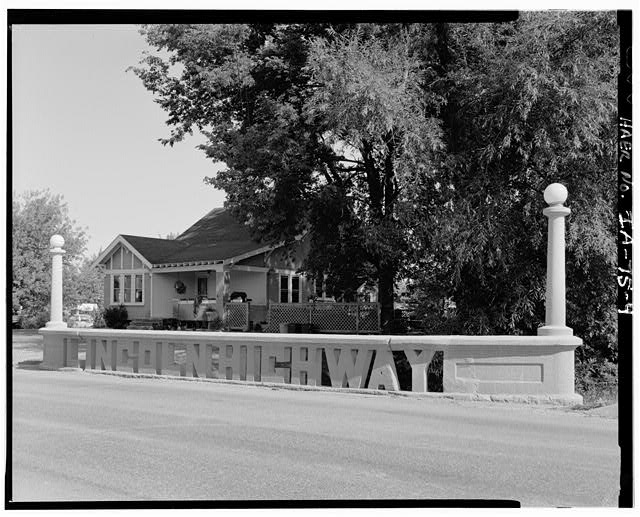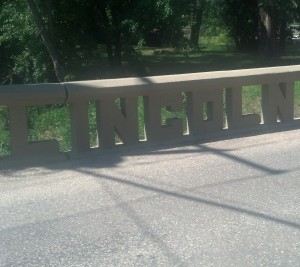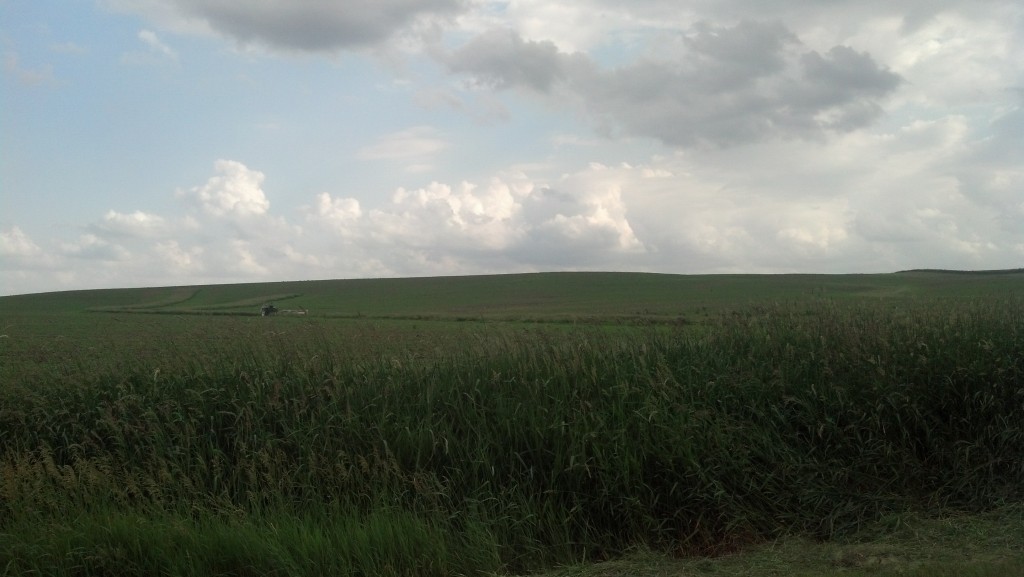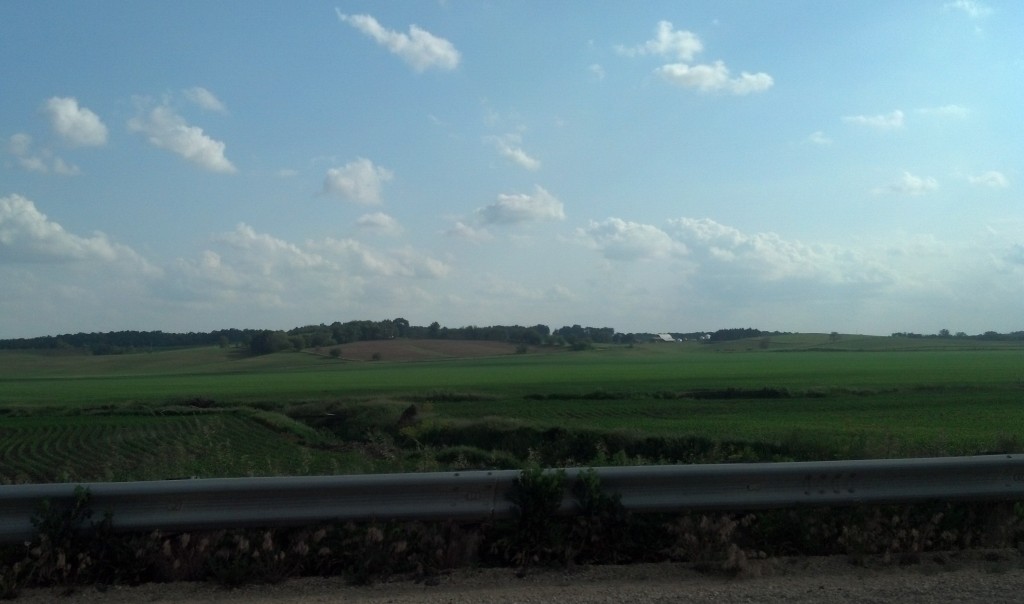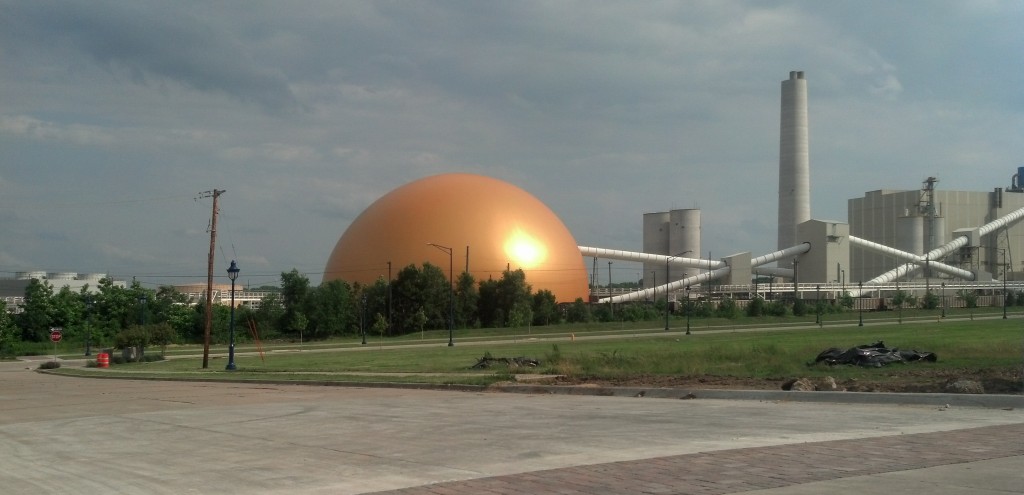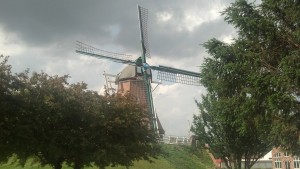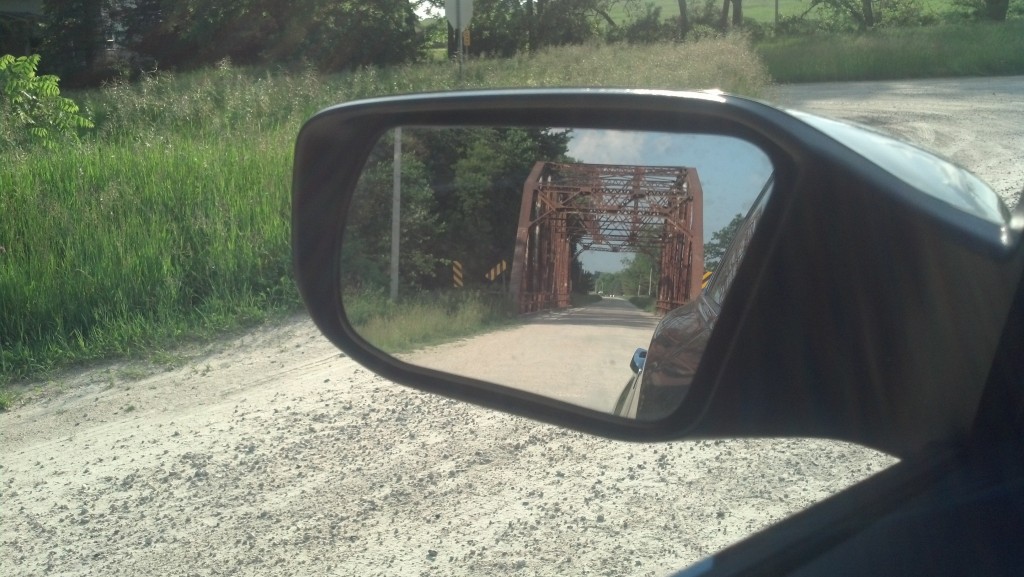
In western Iowa, green and blue dictated the landscape for much of my drive west. (Photo by Michael E. Grass)
ARCADIA, Iowa — The longer you drive west in Iowa, the more the rolling landscape empties out along the Lincoln Highway. Signs of civilization aren’t as frequent. This rural setting becomes even more stunning, especially at a high point of land about 1,429 feet above sea level that marks the watershed divide for rivers feeding the Mississippi and Missouri.
After heading pretty much due west across the state, the Lincoln Highway starts to deviate more and more from its fairly straight course to bend its way toward the southwest along the Boyer River, tributary of the Missouri. Union Pacific trains remain a regular presence along the way downward to the Missouri River’s great valley.
Carroll County is where you start to see western Iowa’s topography start to change everso gradually. According to “History of Western Iowa, It’s Settlement and Growth,” published in 1882:
Carroll is emphatically a prairie county, the entire portion being composed of a gently undulating surface sufficiently rolling to break the monotonous sameness of the level plain, while to the westward of the Middle Raccoon River, the surface is more broken and uneven, in many places rising into hills of considerable prominence. … From this summit can be obtained a fine view of the surrounding country, extending in every direction as far as the eye can reach. On the east and on the southeast is seen in the distance the rich, fertile valley of the Raccoon River, on the south the unsurpassingly lovely country surrounding the Nishnabotny, and on the west the magnificent vale through which flows the Boyer. All of which in a clear summer’s day afford scenery at once grand, beautiful and picturesque.
I can attest that it’s still grand, beautiful and picturesque. The hills are more severe.


